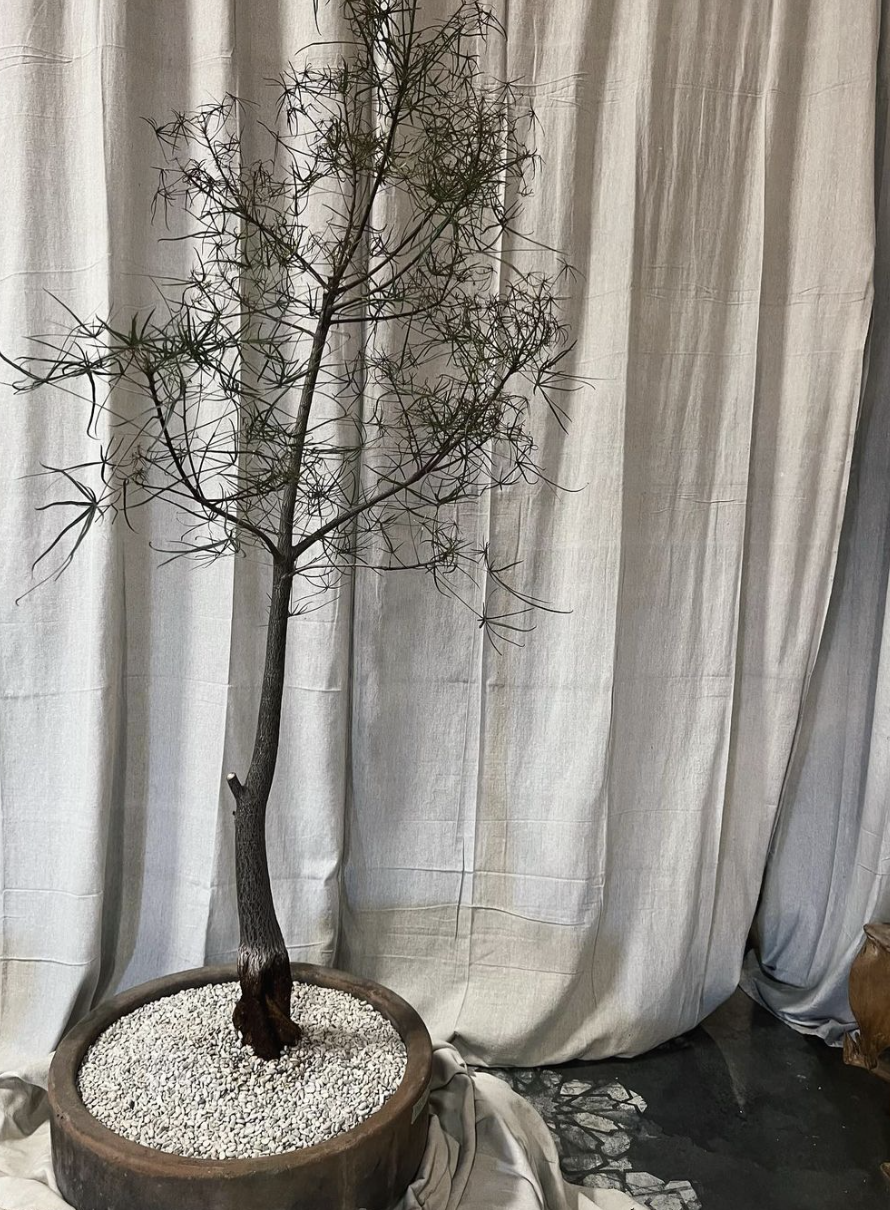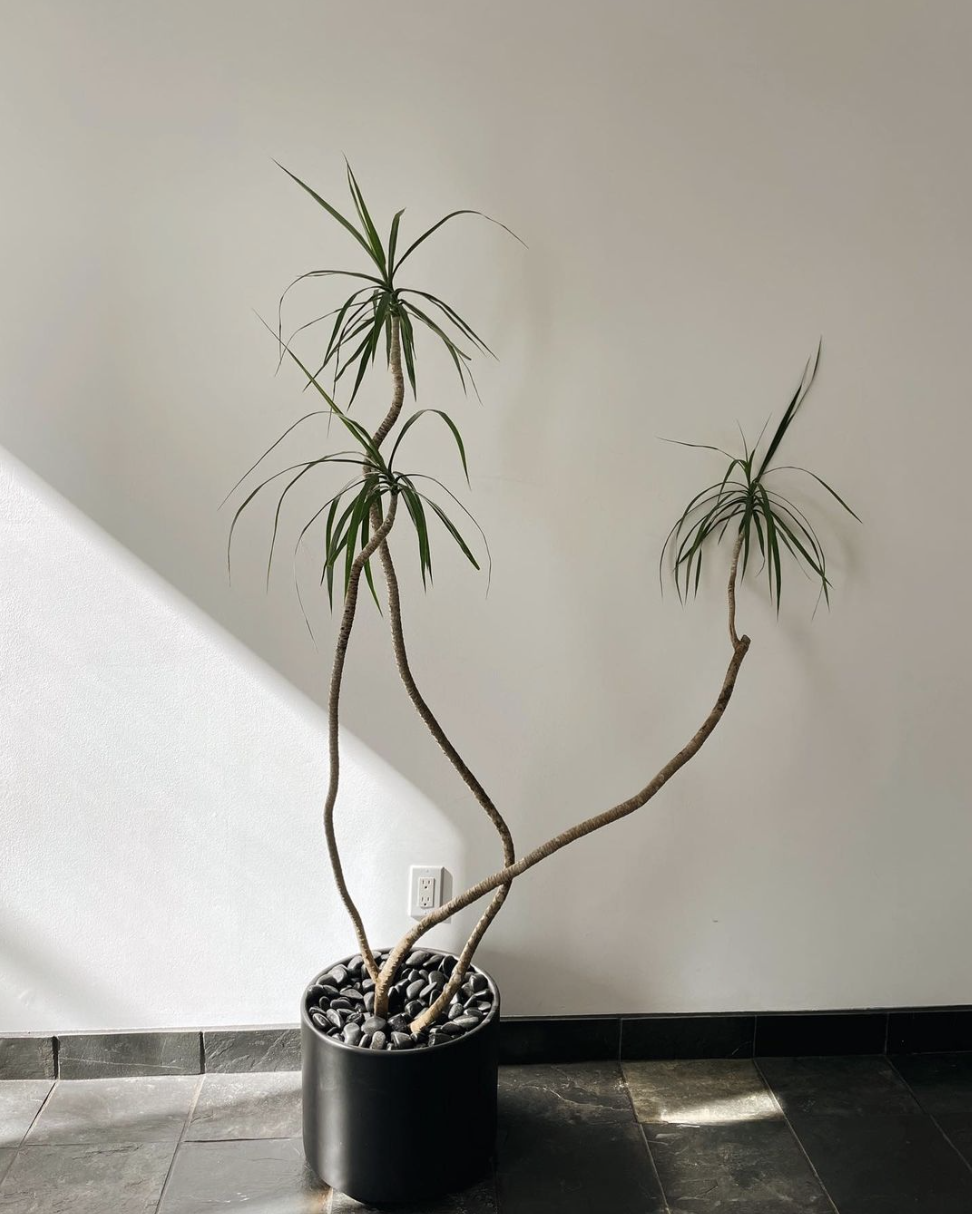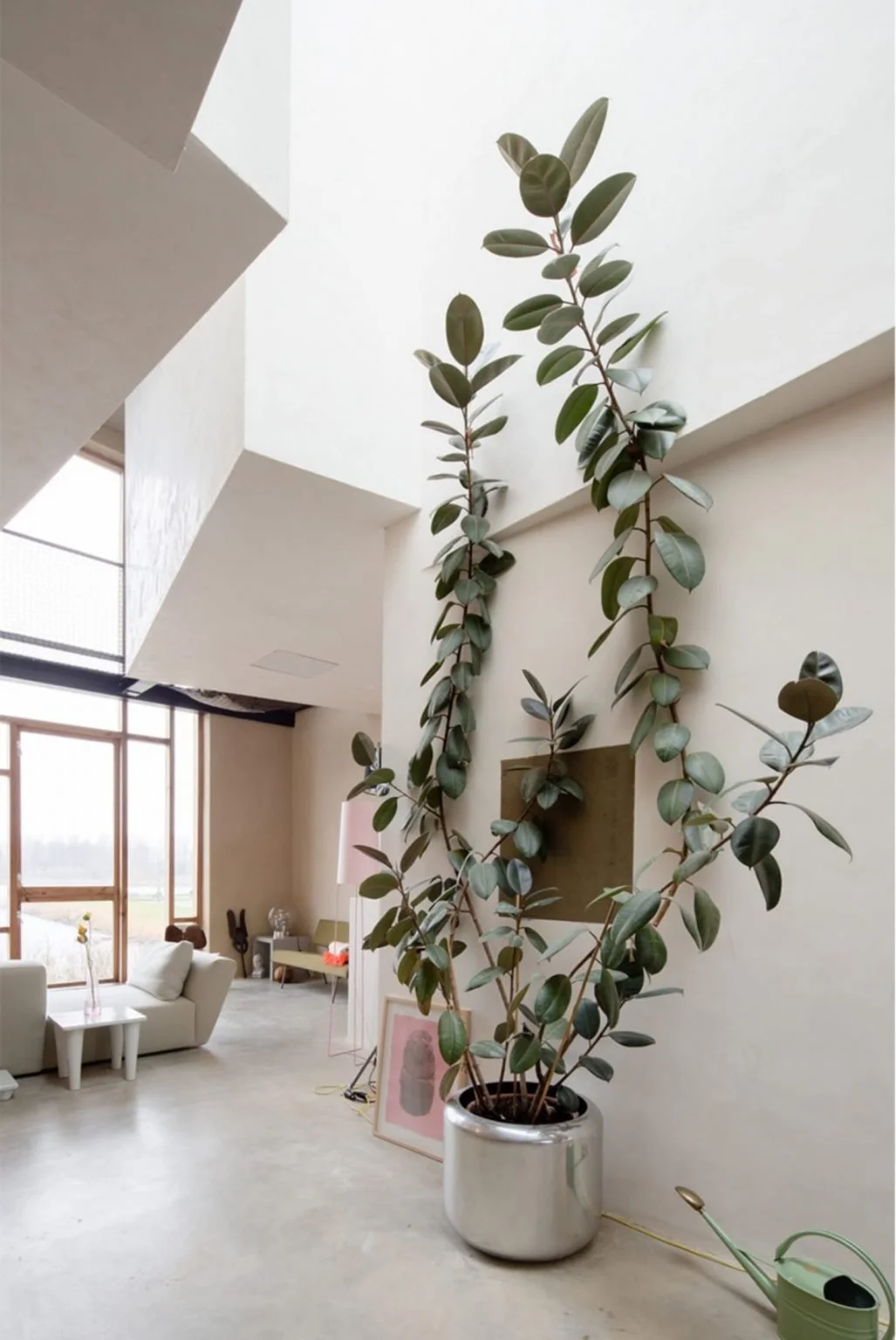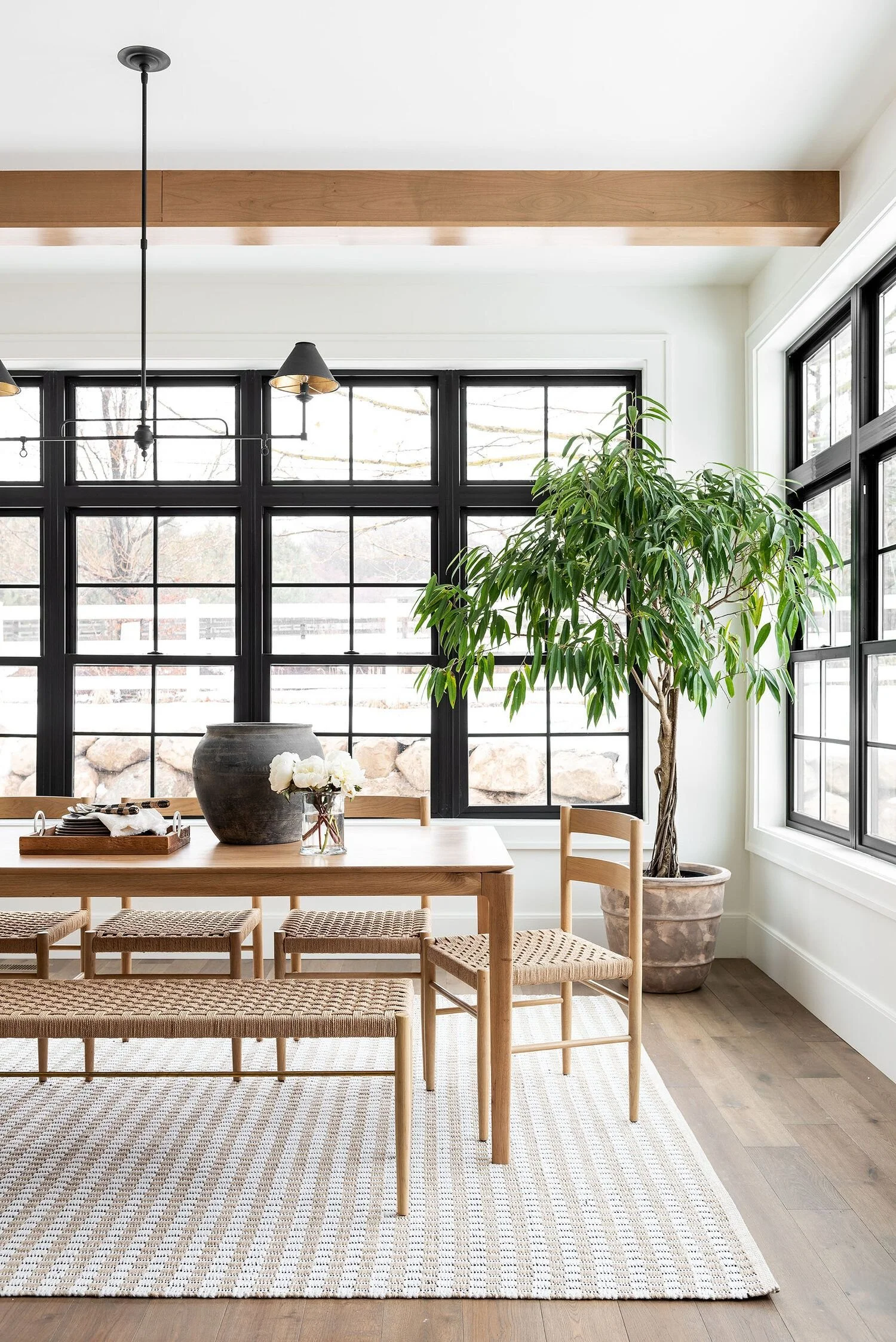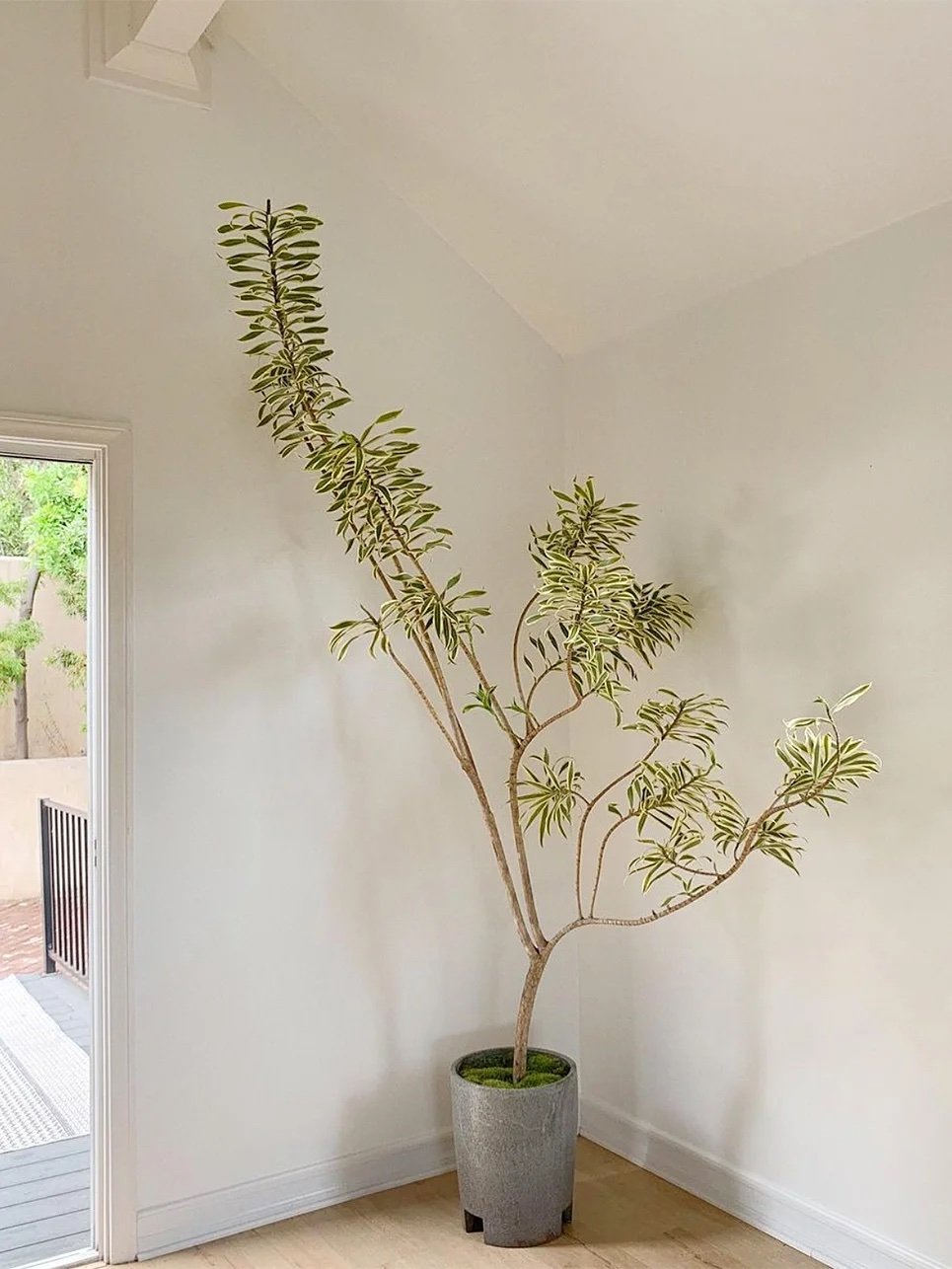Trendy Indoor Trees
So hot right now — indoor trees. But which of these trees can you realistically keep alive indoors? That was more of a question for myself because I’m lucky if I can keep an air plant alive (actually not kidding). We see them all over Instagram, Pinterest and publications in beautifully curated and well designed interior photos. Below is a line-up of some of our interior favorites giving you all the details on plant names, maintenance and why we love them.
The Hot List:
The Australian Bottle Tree a.k.a. Brachychiton Rupestris
Why we like it: This one is by far my favorite right now, it’s modern and architectural.
The Bottle Tree name comes from the infamously ‘bottle’ shaped trunk. To grow well indoors, the Bottle Tree requires full sun. These guys can be planted in almost any soil type and tolerate very dry conditions. Ideally they should be watered only when the soil is dry.
Image via The Plant Daddies
Madagascar Elephant Tree a.k.a. Operculicarya Decaryi
Why we like it: It adds a delicate and airy touch.
This plant is a “natural” bonsai. The Elephant Tree is a resilient plant, and because it is grown in rather harsh conditions, it is a relatively adaptable species. It is more of a rare succulent from Madagascar. The Elephant Tree is drought tolerant and thrives in bright, indirect light in most places. Water only after soil is completely dry. Averages more high maintenance than other indoor trees.
Image via Soil Boy [Etsy, $39 at the time of sourcing]
Umbrella Tree a.k.a. Schefflera Arboricola Variegata
Why we like it: Versatile with its untamed, wild shape.
They can reach 10’-15’ feet tall in it’s natural habitat, but typically reaches a height of 5’-6’ feet tall as a houseplant. The Schefflera Arboricola can thrive in the sun or shade, but prefers indirect bright light. Water only when the soil is dry. Like most plants, don’t let your pets eat this one [Faux Version].
The Plant Daddies [Etsy, $70 at time of sourcing]
The Dragon Tree a.k.a. Dracena Marginata
Why we like it: Bold and exotic character that adds an artistic flair.
One of the easiest plants to care for - hooray! Indigenous to Madagascar, this spiky tree catches the eye and is ideal for novice gardeners. It requires minimal care, can withstand drought, and is nearly impervious to damage. The plant grows slowly and can be planted at any time of year. This small tree can reach heights of up to 20 feet, but it is typically cultivated as a potted indoor plant and pruned to less than 6 feet. Note that the Dragon Tree is harmful to animals if consumed [faux alternative].
The Plant Daddies [Ikea, $19 at the time of sourcing]
Shady Lady a.k.a. Black Olive Tree a.k.a. Bucida Buceras
Why we like it: It’s a classic that elevates and refines any space.
Beautiful, but somewhat high maintenance. It is also on the more expensive side due to its popularity. Originally hailing from the tropics of Central America and the Caribbean. Despite its name, this specific olive tree ironically does not produce any fruit. This tree needs direct sunlight to thrive, and can be placed by a sunny window that receives at least a few hours of direct sunlight per day. The Black Olive will not do well in indoor areas that are not well lit. The tree should dry out slightly, and then water thoroughly. Do not allow the tree to dry out completely, as it may cause defoliation.
Image via Eye Swoon
Ficus Audrey
Why we like it: If you have loved and lost the Fiddle Leaf Fig, this is the less high-maintenance close cousin. Native to India, the Ficus Audrey is also known as the Banyan Tree. Though not as finicky as the Fiddle Leaf Fig, proper light and watering are the most important elements to keeping this tree happy indoors. Dependent on growing conditions, [indoors] a Ficus Audrey normally reaches around 10 feet tall, and 3 to 4 feet wide. Buyer beware, the Ficus Audrey is considered toxic to pets so be sure to keep it out of reach of any fur babies.
Image via Friends of Friends [Home Depot, $55 ; Wayfair, $53 at time of sourcing]
Image via Pinterest
Ficus Alii
Why we like it: It’s sophisticated and the elegant slender graceful leaves add fullness and greenery.
Tougher than other popular houseplant ficus species, 'Alii' tolerates a variety of light conditions and doesn’t shed leaves as quickly. Grows to approximately 8 feet tall and requires medium to bright indirect light. With proper supervision it can thrive. [close Faux Version]
Arvino Olano x The Plant Daddies [Home Depot, $100 at time of sourcing]
Image via Studio McGee [Etsy, $120 at time of sourcing]
Song of India a.k.a. Pleomele a.k.a. Dracaena Reflexa
Why we like it: Its vibrantly colored leaves and irregular stems add dichotomy to any space.
The Song of India is native to various islands in the Indian Ocean such as Madagascar, Mauritius, and Mozambique. It is widely grown as a decorative plant and houseplant, valued for its richly colored leaves and thick, irregular stems. They can grow as tall as 13’ - 16’ feet, but does not reach such lofty heights when grown indoors. This Dracaena thrives in average room conditions, and will survive in low light, but you'll get the best growth by keeping this tropical plant in bright light year-round (just don't overwater). Fairly low maintenance.
Plants and Spaces
Ponytail Palm a.k.a. Beaucarnea Recurvata
Why we like it: A dynamic, fun and modern addition.
The Ponytail palm is a slow grower, so if you want a tree, buy the largest one you can find (they can reach about 6 feet tall indoors). We love how easy this one is — drought tolerant, slow-growing and requires very little care (I think I just won the plant lottery). This plant is ideal for people with very little time or forget to water their plants, like me. The Ponytail Palm will be happy being watered every couple of weeks and left alone to soak up the sunlight. Like a succulent, only water when dry and don’t oversaturate.
Image via Pinterest
Image via Pinterest


